
After its official announcement last month, everyone waited with bated breath as to how the Ryzen 5000 series will improve upon AMD’s tried and tested formula. In this review we will be taking a look at the midrange option for the Ryzen 5000 series: the AMD Ryzen 7 5800X. With the same core count as its predecessors, will it be able to deliver improved performance that AMD has been promising?
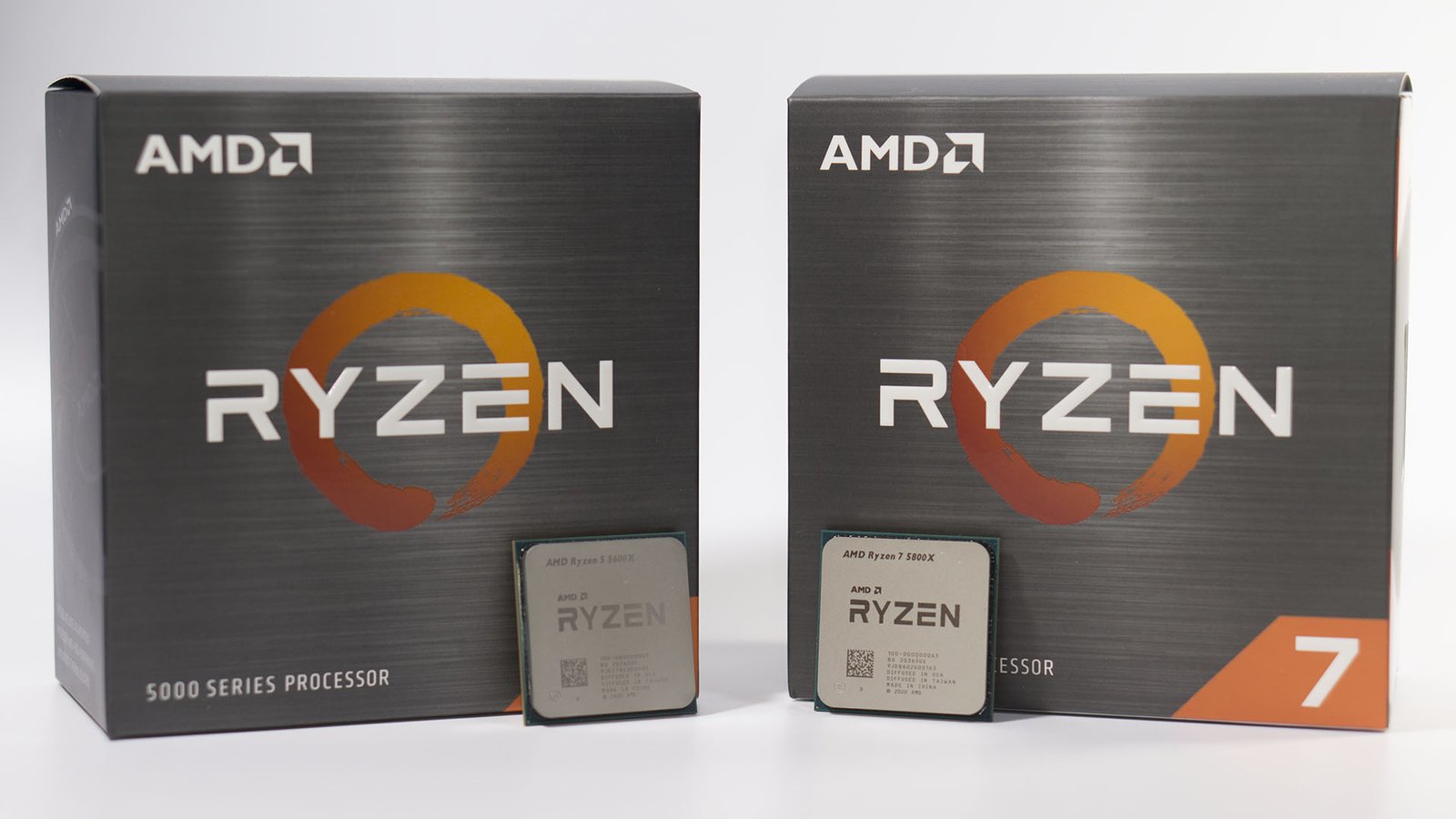
AMD will not be introducing any additional SKUs this generation and will be sticking to their traditional Ryzen 5, Ryzen 7, and Ryzen 9 naming schemes that connotes the number of cores and thread each of the processors have.

The four new processors – the Ryzen 9 5950X, Ryzen 9 5900X, Ryzen 7 5800X, and Ryzen 5 5600X – will have largely the same price points as the ones from the previous generation.
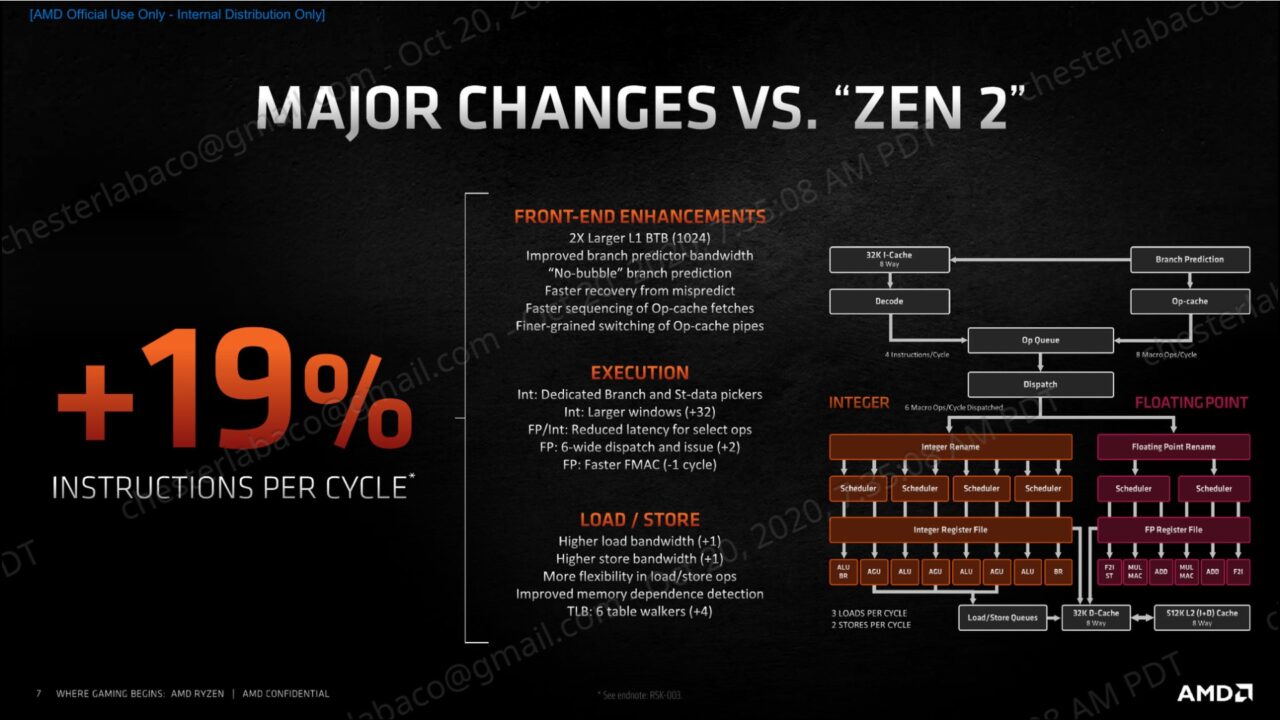
All the improvements that AMD has made with the Ryzen 5000 series lies in the Zen 3 architecture. They are promising up to 19% IPC increase on their new processors, which will deliver better overall performance especially in gaming. This growth in IPC can be further divided to several categories of improvements:
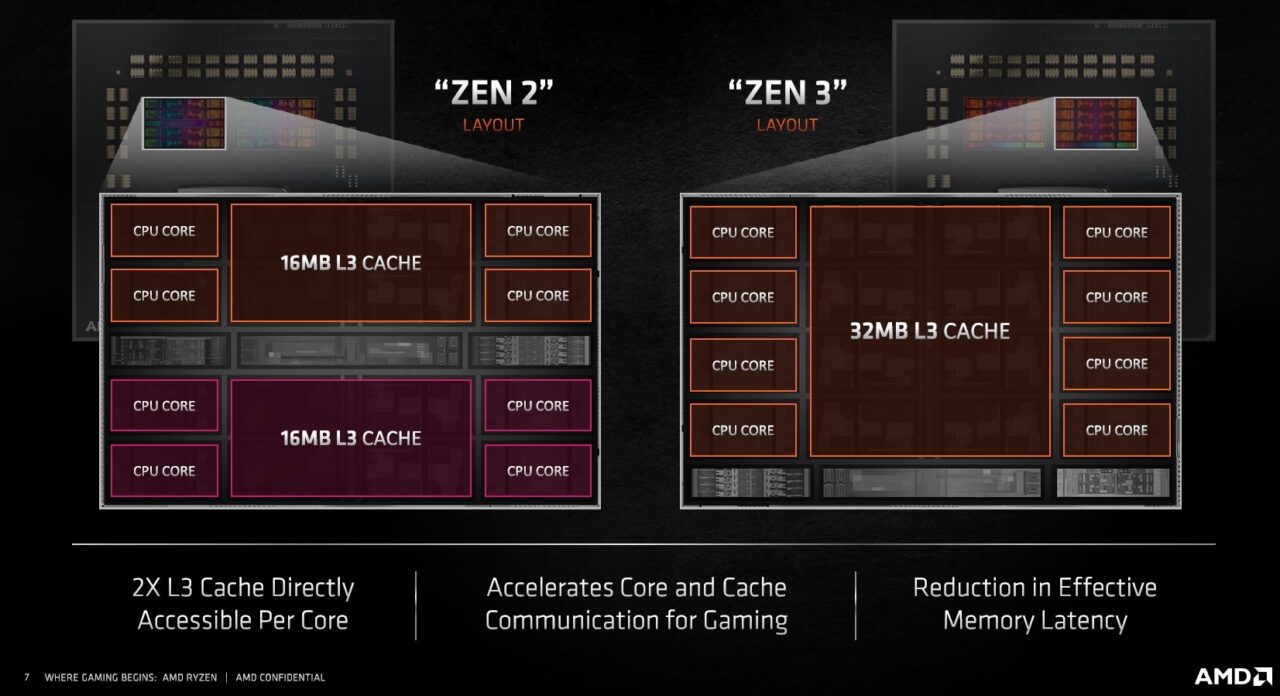
The Zen 3 architecture has overhauled the core complex (CCX) design found on previous Zen iterations. Instead of two four-core CCXes with two 16MB L3 cache for each one, Zen 3 unifies the design into a single eight-core CCX with a 32MB L3 cache to reduce memory latency and to double the L3 cache available for each core to access.

This implementation reduces core-to-core communication between CCXes for processors like the 5950X and 5900X. Meanwhile, core-to-core communication for single CCX designs as with the 5800X and 5600X is completely eliminated. This reduction in traffic between the CCXes allows the Infinity Fabric to have more bandwidth dedicated for other tasks.

Thankfully, the improved performance brought by the Zen 3 architecture on the Ryzen 5000 series won’t need a new platform. These processors only need the minimum AGESA 1.0.8.0 BIOS installed on an X570 or B550 motherboard. Those who are upgrading from older 400 series motherboards will need to wait as AMD has announced that their BIOS updates will run a beta test starting January next year.

We ran our customary suite of benchmarks and games to test the capability of the AMD Ryzen 7 5800X. Benchmarks were performed in a room with an ambient temperature of 24°c using our open test bench.

The AMD Ryzen 7 5800X is an 8-core, 16-thread processor with a base clock of 3.8GHz and a max boost clock of 4.7GHz. On our testing, AMD’s Precision Boost 2.0 can increase single core clock speeds of the processor up to 4.85GHz while all-core boost remained a steady 4.7GHz as advertised.
The processor does not come with a cooler so we will be using our Cryorig R1 Universal for our testing on both stock and overclocked benchmarks. Overclocking on the Ryzen 7 5800X posed similar problems as with most Ryzen processors in the past.

There are minimal improvements to be gained on increasing clock speeds through the BIOS. In our testing, we only managed 4.8GHz on all core at 1.425v which is only 100MHz more than its boost speeds and 50Hz slower than its single core boost. Pushing the clock speeds higher results in system instability.
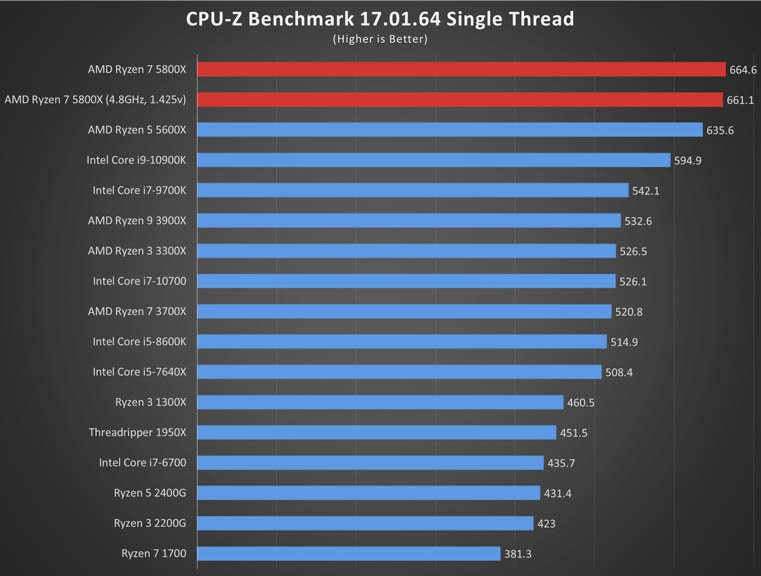
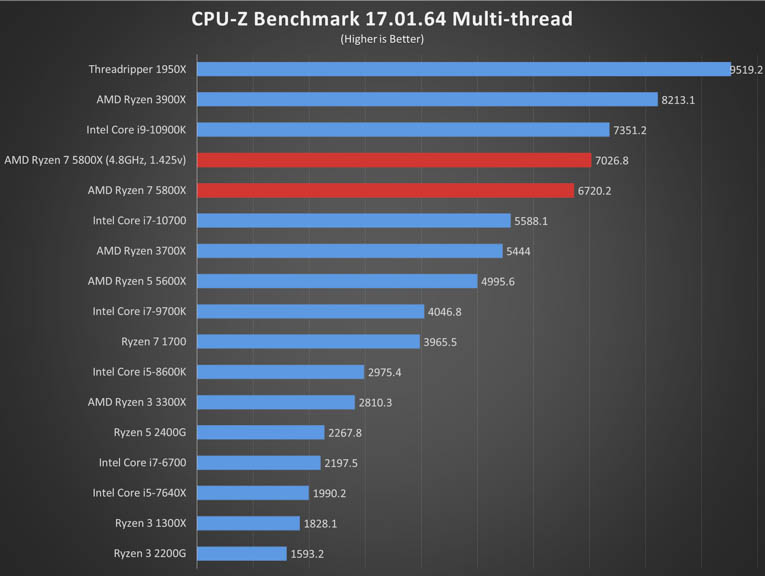
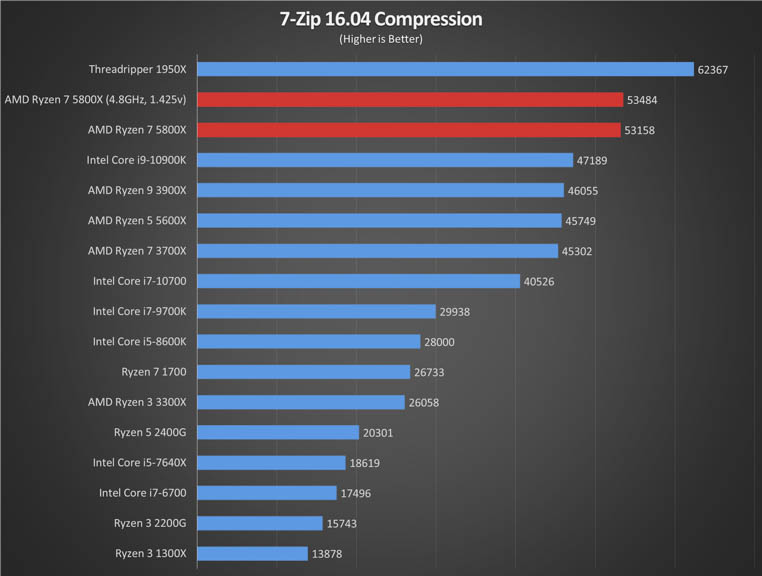
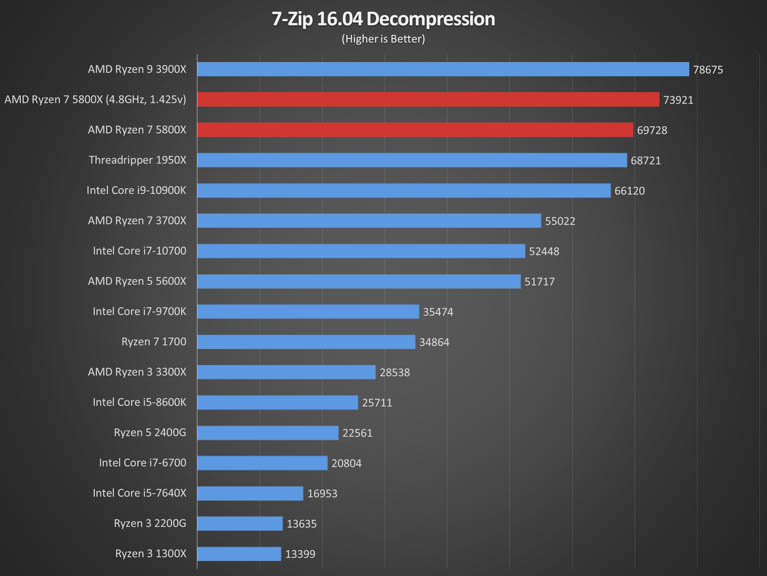

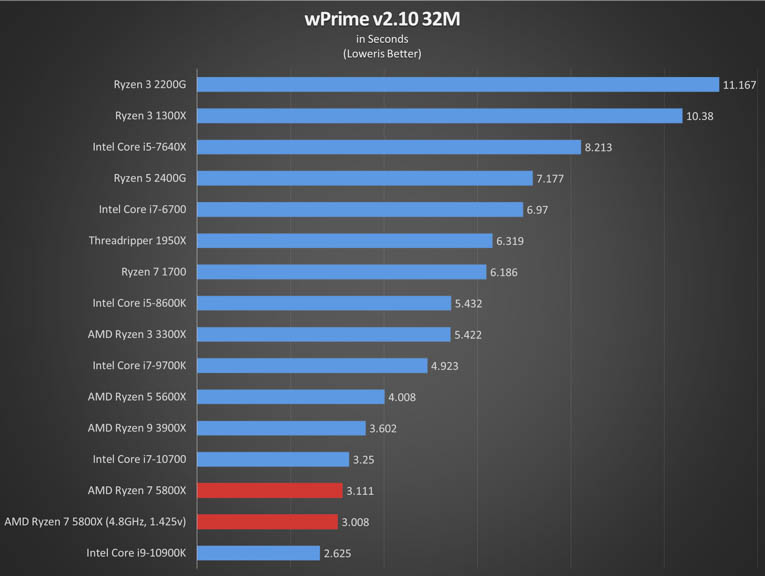
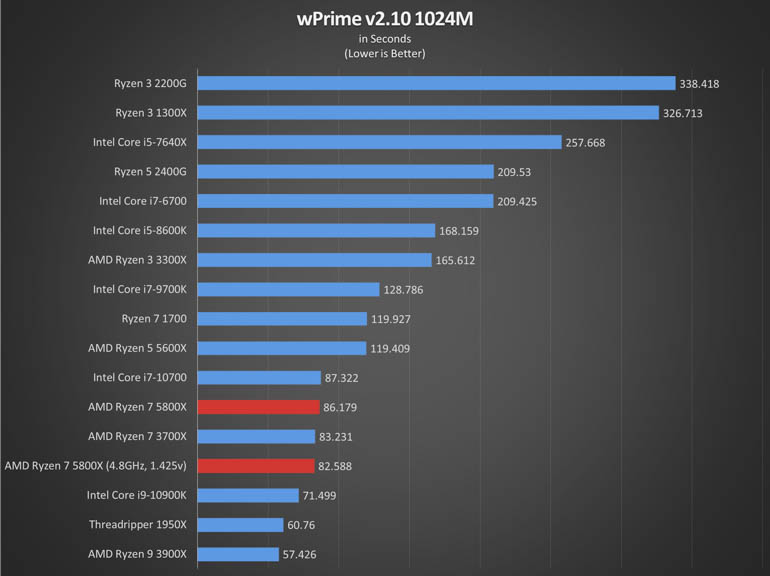
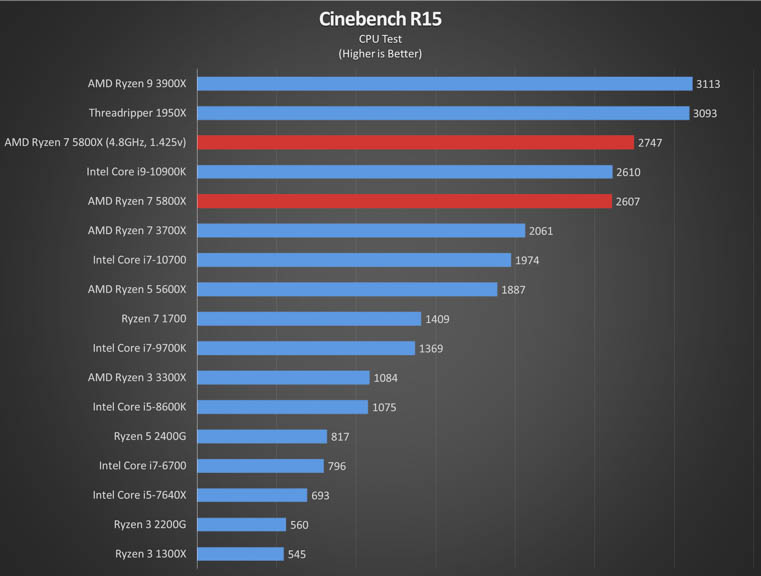


Benchmarks put the AMD Ryzen 7 5800X against the Intel Core i9-10900K and the Ryzen 9 3900X as it leaves behind its nearest predecessor, the Ryzen 7 3700X. Single-core performance places it just above both processors in certain scenarios and trailing closely behind in others.
Applications that take advantage of more cores gear toward the 10900K and the 3900X but the 5800X will place just above of either from time to time like with Cinebench R15 and R20. More core intensive programs like blender takes advantage of both clock speeds and additional cores, which allows Intel’s 10900K to pull ahead by the skin of its teeth.
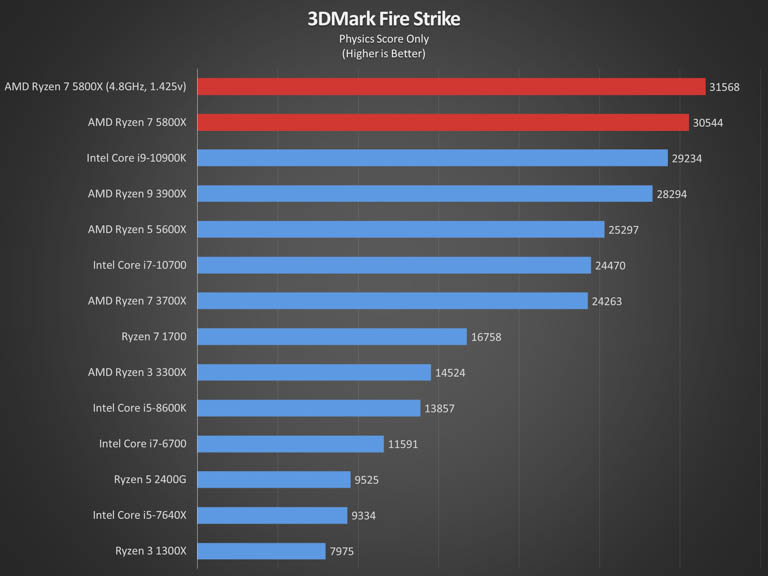
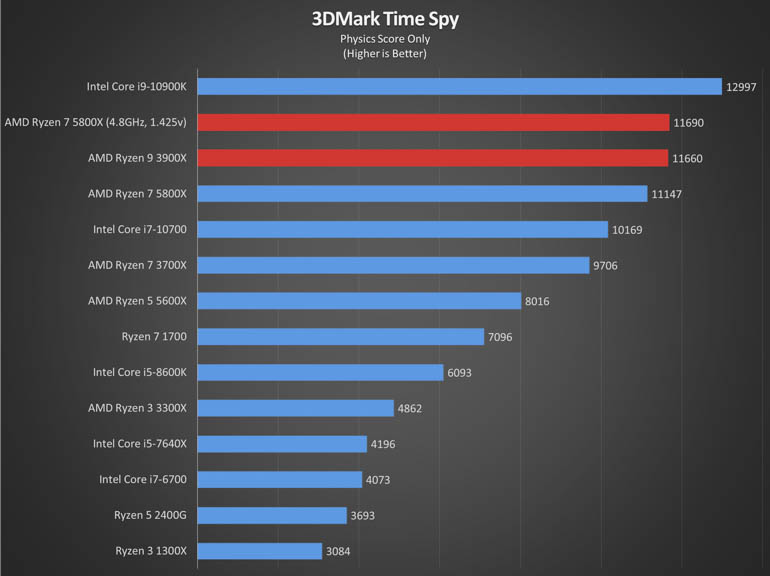


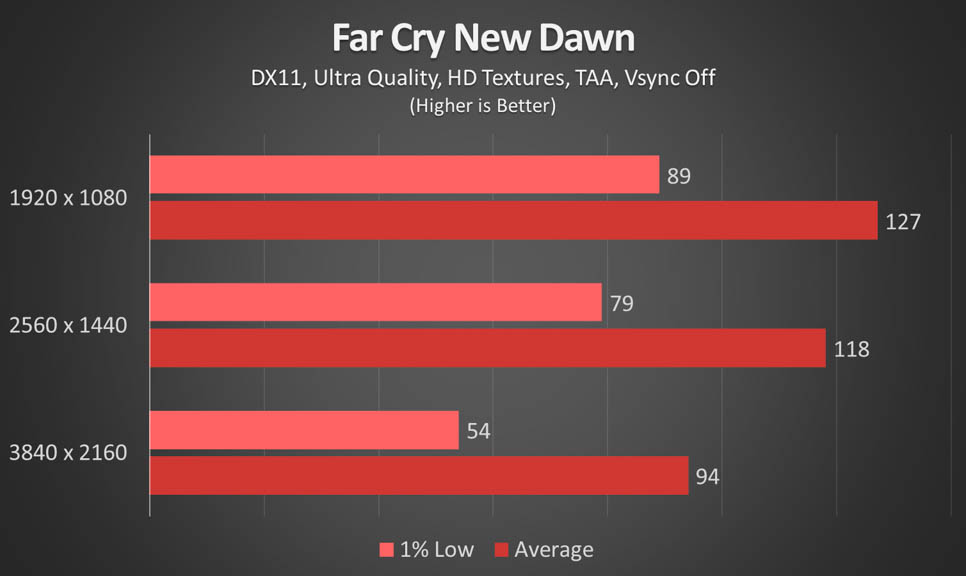

It’s no secret that AMD has been somewhat trailing behind in gaming performance on their processors especially at 1080p. It seems that that is no longer the case with the Ryzen 5000 series and Zen 3. Physics test on both 3DMark Fire Strike and Time Spy shows the 5800X gaining advantage over the 10900K at the former while slightly losing at the latter.
Numbers produced by the AMD Ryzen 7 5800X paired with our RTX 3080 further proves that it can equal Intel at 1080p, which is especially helpful for competitive games like Rainbow Six Siege where it averages at 445fps. This means that Ryzen can now be comfortably matched with 360Hz displays without worry.
Meanwhile, Ashes of the Singularity demonstrates its capability to be consistent at 1080p, 1440p, and 2160p with nearly the same score across the three resolutions at the game’s CPU Bound benchmark. Even triple A games like Far Cry New Dawn and Shadow of the Tomb Raider gain a significant boost compared to the previous generation 3700X paired with the same GPU.
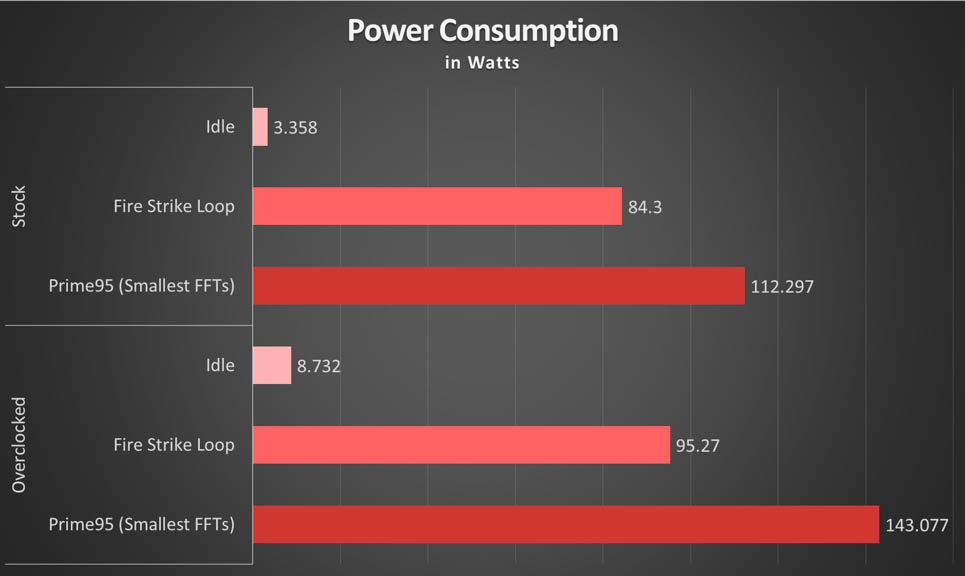
The AMD Ryzen 7 5800X has a 105W TDP by default though it can sip just around 4W while idle. Under a normal gaming session simulated by a Fire Strike Physics Loop test, it averages at around 85W which is well below its stock TDP while heavier workloads peak at 112W.
Power consumption significantly rises once it is overclocked to 4.8GHz at 1.425v. Idle remains at a low 8.7W while running Fire Strike Physics Loop increases power consumption to 95W. At the heaviest workloads, it can even reach 143W peak power consumption.
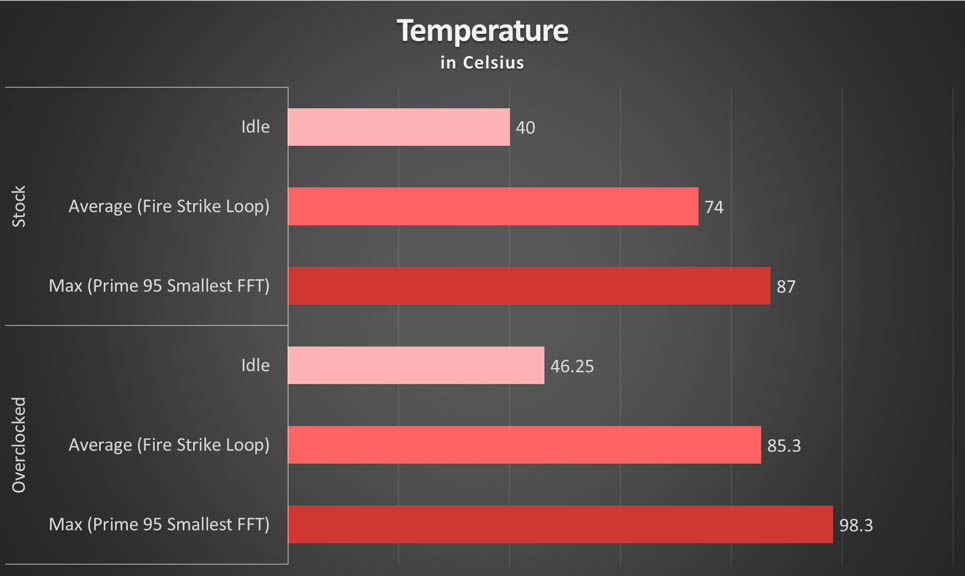
Temperatures are pretty decent with our Cryorig R1 Universal. By default, it rests at around 40°c at idle, an average of 74°c in Fire Strike Physics loop, and a rather toasty 87°c when running Prime 95 with the Smallest FFT settings.
Heat produced by the 5800X seriously jumps when overclocked. Idle sees an increase of 6°c from the 40°c stock, while an average gaming session will put it at an average of 85°c. Increasing the workload makes its temperature reach a 98.3°c, which means that a high-end cooler is needed if you are going to overclock the 5800X.
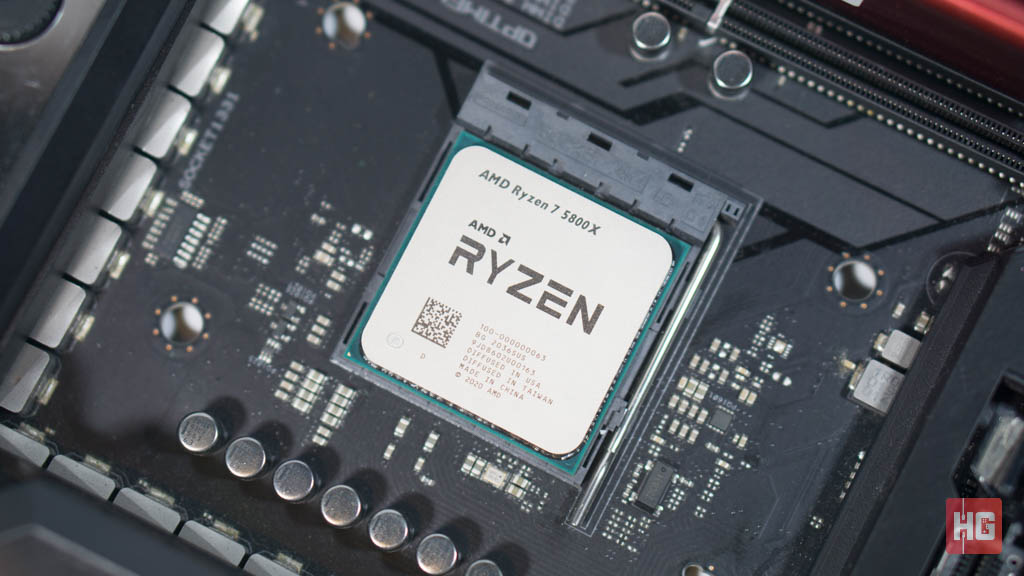
AMD has been trailing in single-core performance since the introduction of the Ryzen series processors back in 2017 but they have made up for it by offering its consumers more cores at a competitive price. With Zen 3 and the Ryzen 5000 series, AMD has now achieved a significant jump in single-core performance as well as multi-core performance compared to previous Ryzen processors and even Intel’s Comet Lake-S CPUs.
As for the Ryzen 7 5800X, it sits in a comfortable middle ground between the more expensive Ryzen 9s and the more affordable Ryzen 5 series with an asking price of PhP 24,800. Though it loses some of the performance brought by additional cores compared to the 3900X or even the 10900K, it isn’t too far from the two to be considered as a significant deficit. Single core performance is the best among the processors we have seen so far including the aforementioned 10900K from Intel.
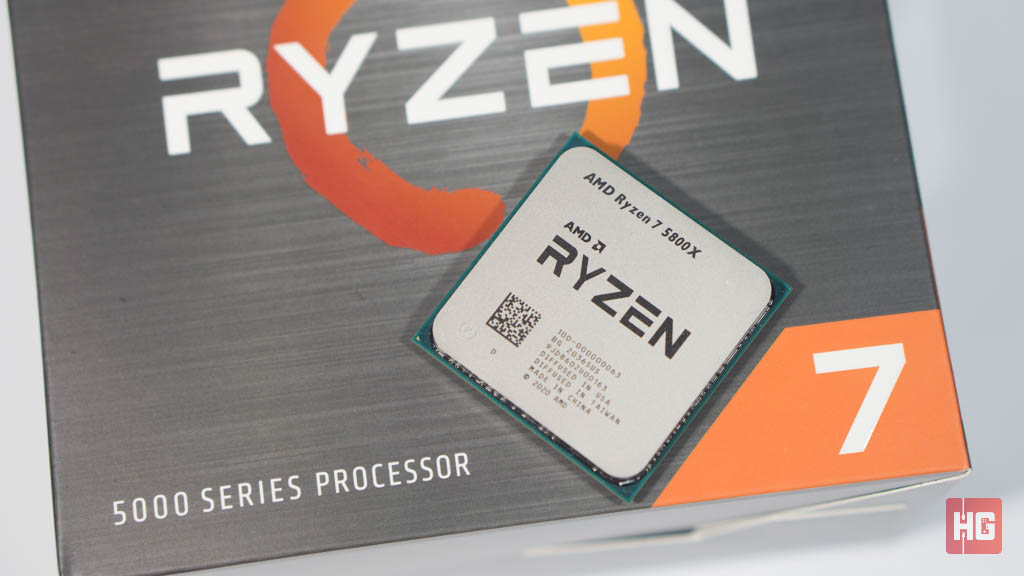
The only disappointment we found on the 5800X is its overclocking capabilities. AMD has been pushing the clock speeds of their processors near the limit with the every Ryzen processors thus far and that fact doesn’t change with 5800X. Though you can eke out an additional 100MHz, the heat produced and power consumed by the chip for such a small improvement doesn’t make much sense.
Overall, the AMD Ryzen 7 5800X offers tremendous performance for PhP 24,800. With top-notch single core and multi-core performance, AMD has truly stepped up their game and gave their fans and critics a great processor for both gaming and productivity.

For all these reasons, we are giving the Ryzen 7 5800X our seal of approval. If you’re looking for an 8-core, 16-thread processor for gaming and creative work with absolute performance in mind, then the 5800X is definitely the processor for you.
